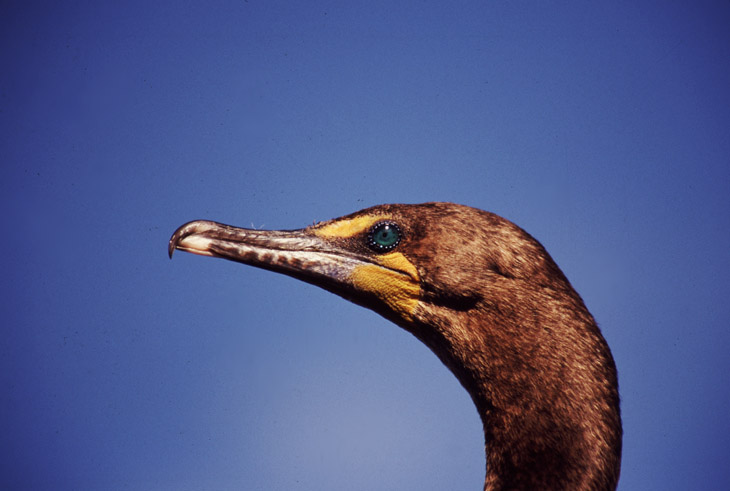Let’s use today’s slide to start off a whole week of color posts, okay?

I have referred to the Florida Keys Wild Bird Rehabilitation Center as the Avian Modeling Agency, and with good reason: on my one visit there back in October of 1999, I obtained a load of portraits of birds that, until then, I had never even gotten close to. Sure, they were captives, only, not exactly. Everything that I took was either of released birds that were hanging around for handouts before they rejoined their flocks, or of perfectly wild birds that were hanging around for handouts because it was much easier than hunting on their own. Or birds that simply liked that the property was backed onto the Florida Sound and weren’t too concerned with my presence. In fact, one of my business card images, as I was settling on the name of ‘Wading In Photography,’ was taken there too.
I’m fairly certain this double-crested cormorant (Phalacrocorax auritus) was a former patient, and if you’re looking for the crests in the name, don’t bother; they’re only present during breeding season. It’s a simple profile pic, nothing exciting, but the eyes carry it, don’t they? Cormorants are the only birds I’ve seen with eyes even remotely this color – brown or yellow are the norms (and occasionally red.)
This image shows a common trait of lenses, more pronounced in some models over others: light falloff. Due to the nature of spherical lenses, there is often a loss of light in the edges when the aperture is wide open, seen as the darkening towards the corners. Mostly, anyway; there were some clouds in the sky, way out of focus in this image, that changed the background tones, and you can see the evidence of it faintly in lower center. Regardless, I knew better, and there was more than enough light to stop down to f8 or lower, which would have eradicated the effect – I’d just forgotten about it. Or maybe the bird was moving around too much and I’d opted for a faster shutter speed to combat this. Yeah, that’s probably it…




















































